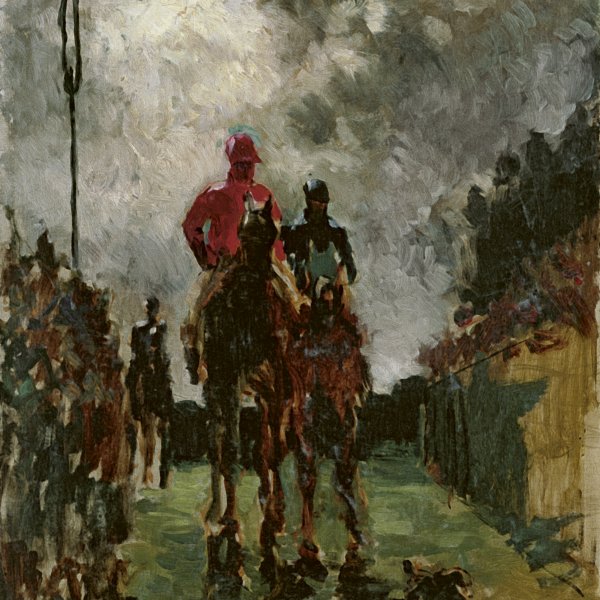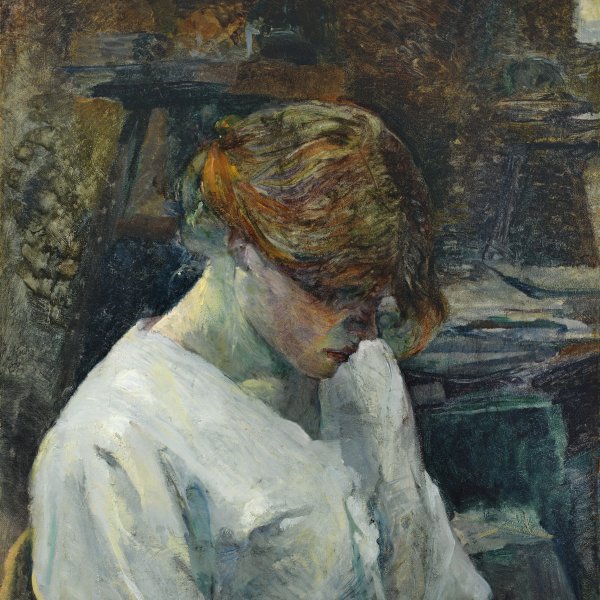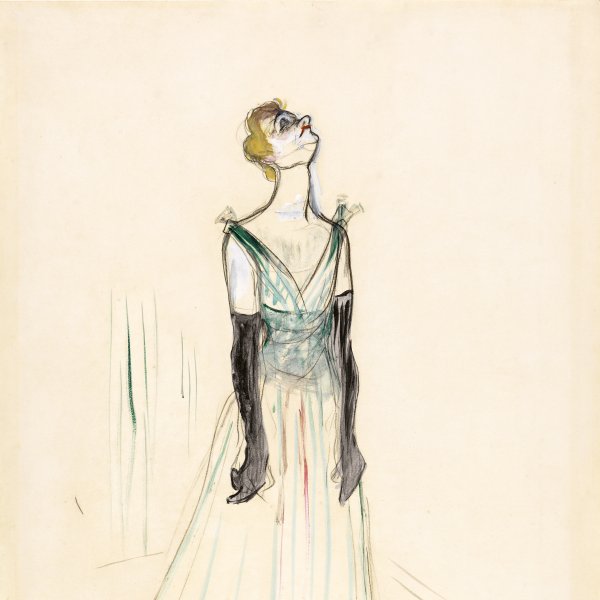Henri de Toulouse-Lautrec
Albi, 1864-Langon, 1901
A painter and lithographer, Henri de Toulouse-Lautrec is remembered as the artist who portrayed life in late nineteenth-century Paris. Born into a family of wealthy landowners, he suffered from a congenital disorder that marked his entire life and was the cause of his fragile bones, short stature and facial deformity. After fracturing his left femur in 1878 and the right the following year, he was forced to spend lengthy periods convalescing, during which he developed an interest in drawing.
In 1882 Toulouse-Lautrec moved to Paris to begin training as a painter at the studio of Léon Bonnat, and a few years later under Fernand Cormon, where he met Louis Anquetin, Émile Bernard and Vincent van Gogh. After being sympathetic to Impressionism for a short time, he began to develop a personal style that was closely linked to concerns shared by other contemporary artists, such as an attraction for things Japanese and an interest in capturing city life. His portraits, which depict people from all social classes, clearly attest to his skilful and harsh manner of capturing the subject’s psychology through body language and facial expression.
In 1884 Toulouse-Lautrec set up his own workshop in Montmartre, a district frequented by artists since the 1850s. He soon began to alternate the hours spent at museums and art galleries with visits to the cafés, circuses and cabarets in his new neighbourhood. These nocturnal forays would provide him with the favourite themes for his paintings, drawings and lithographs. At twenty-one he regularly sold drawings to various magazines and newspapers, illustrated books, and made lithographs for the haunts he frequented. From 1886 pictures of his hung permanently in the Cabaret Le Mirliton and one of his paintings, Circus Fernando: The Ringmaster, 1888 (Chicago, Art Institute of Chicago), was on display during the opening of the Moulin Rouge in 1889. Toulouse-Lautrec’s fame spread through Paris owing to both his work and the scandals in which he was increasingly involved. His family was eventually forced to commit him to a clinic in 1899 in an attempt to cure his alcoholism. He died in 1901 after suffering a stroke before reaching the age of thirty-seven.
In 1882 Toulouse-Lautrec moved to Paris to begin training as a painter at the studio of Léon Bonnat, and a few years later under Fernand Cormon, where he met Louis Anquetin, Émile Bernard and Vincent van Gogh. After being sympathetic to Impressionism for a short time, he began to develop a personal style that was closely linked to concerns shared by other contemporary artists, such as an attraction for things Japanese and an interest in capturing city life. His portraits, which depict people from all social classes, clearly attest to his skilful and harsh manner of capturing the subject’s psychology through body language and facial expression.
In 1884 Toulouse-Lautrec set up his own workshop in Montmartre, a district frequented by artists since the 1850s. He soon began to alternate the hours spent at museums and art galleries with visits to the cafés, circuses and cabarets in his new neighbourhood. These nocturnal forays would provide him with the favourite themes for his paintings, drawings and lithographs. At twenty-one he regularly sold drawings to various magazines and newspapers, illustrated books, and made lithographs for the haunts he frequented. From 1886 pictures of his hung permanently in the Cabaret Le Mirliton and one of his paintings, Circus Fernando: The Ringmaster, 1888 (Chicago, Art Institute of Chicago), was on display during the opening of the Moulin Rouge in 1889. Toulouse-Lautrec’s fame spread through Paris owing to both his work and the scandals in which he was increasingly involved. His family was eventually forced to commit him to a clinic in 1899 in an attempt to cure his alcoholism. He died in 1901 after suffering a stroke before reaching the age of thirty-seven.







